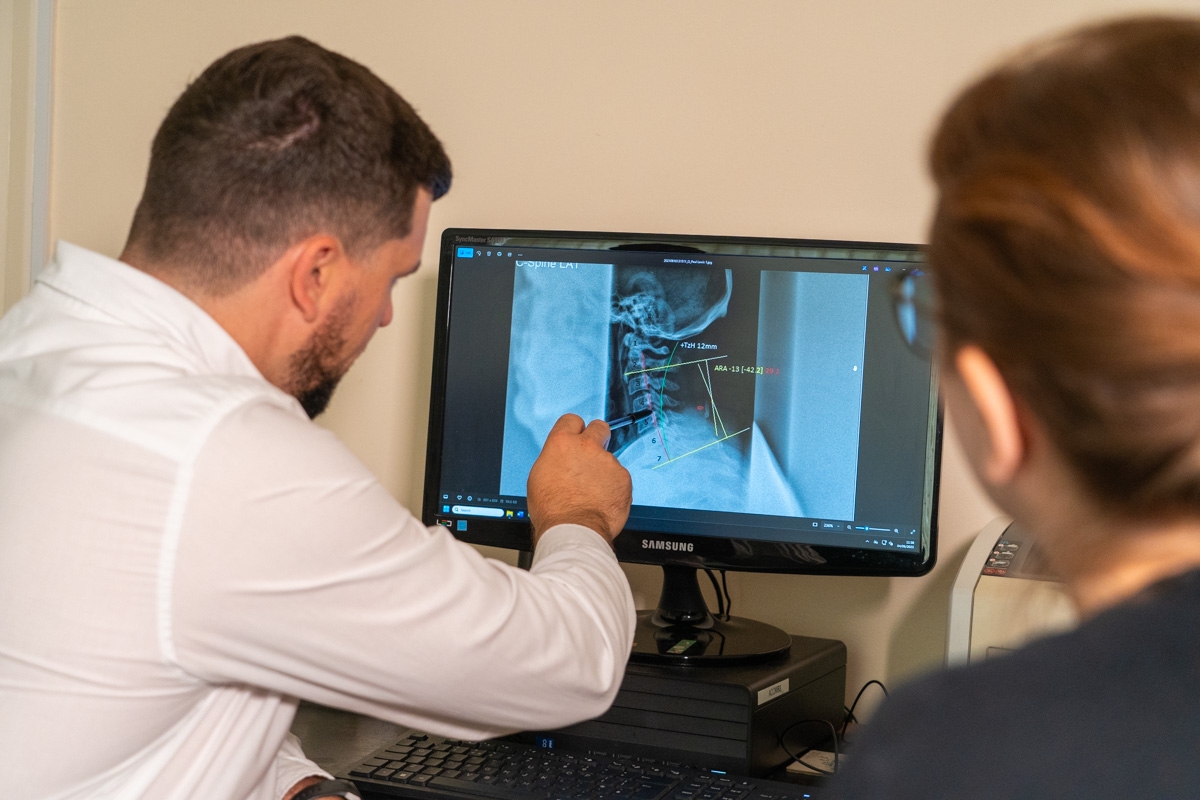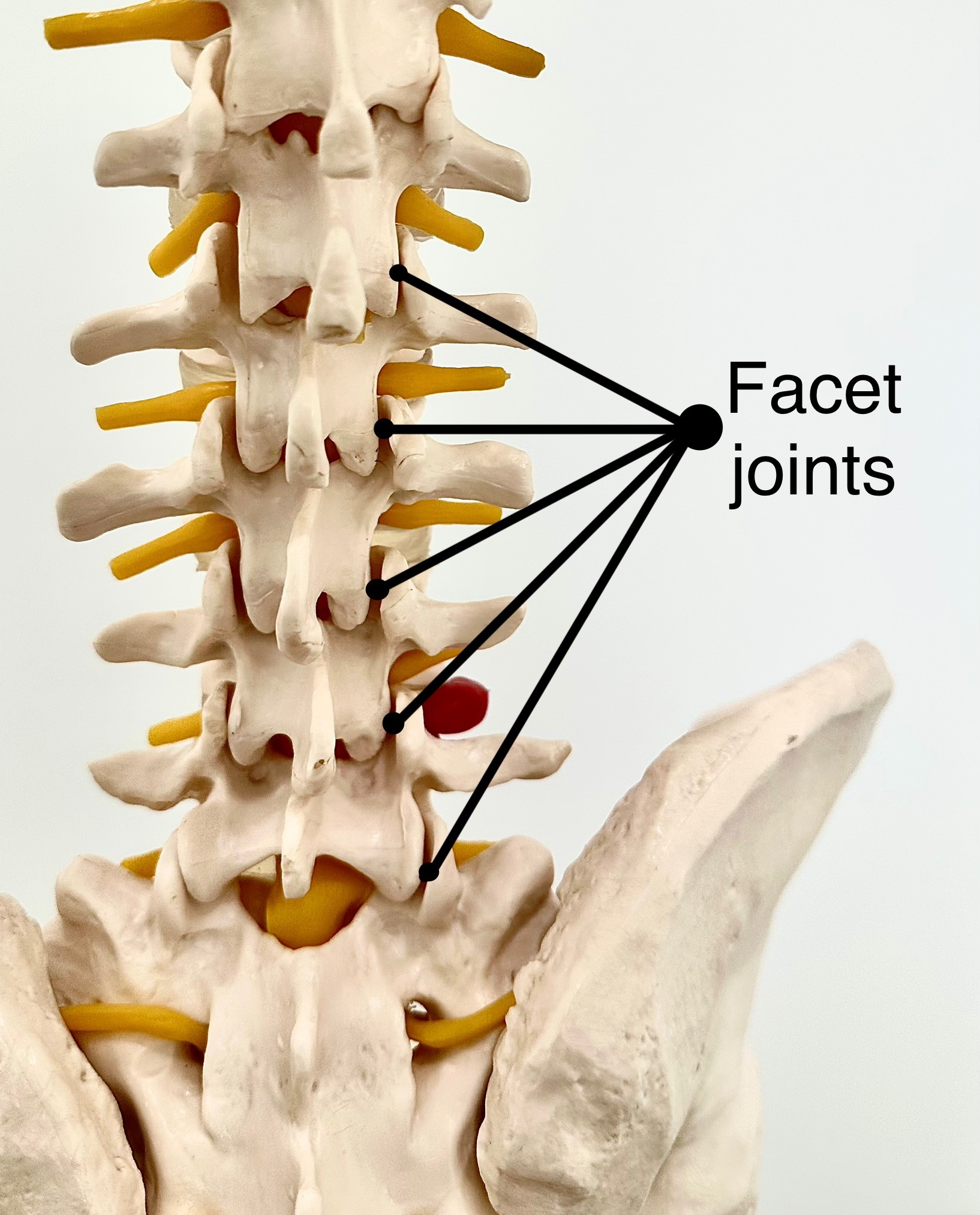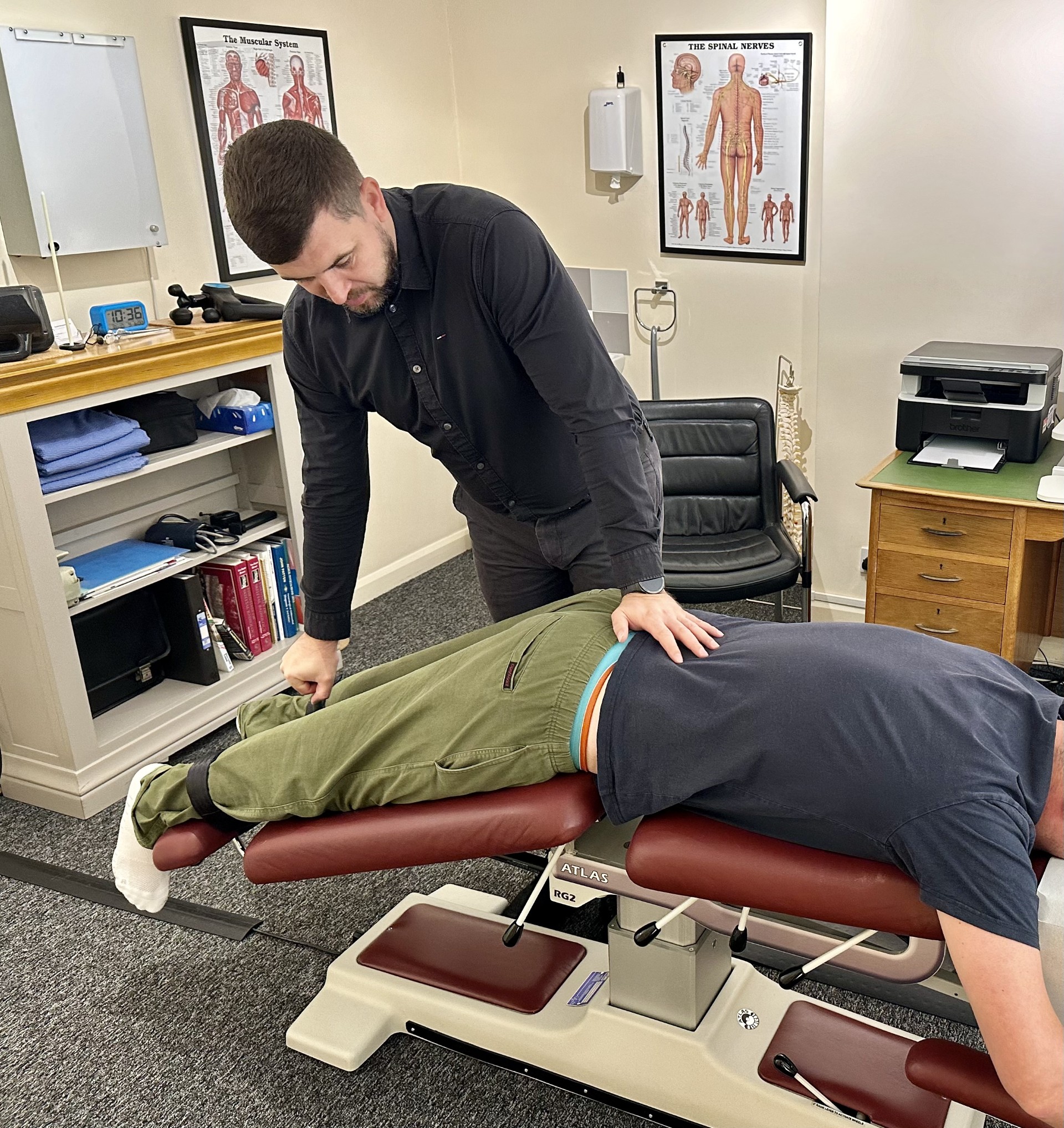Facet joint pain is a common source of spinal discomfort that can significantly affect your daily life. At Acomb Chiropractic Clinic, we provide you with clear, comprehensive information that not only explains the causes and treatments of facet joint pain but also guides you to effective strategies aiming to prevent it
As Chiropractors, facet joint pain is one of the more common things we see, it can sometimes be severe and acute (recent), or it can also be chronic (long standing). Facet joint pain is also often recurrent in nature, where the sufferer might get sudden bouts of severe unexplained back or neck pain every few months or weeks.

Understanding facet joint pain
Facet joints are small stabilising joints located between and behind each of your vertebrae. We have two facet joints between each vertebra, one on each side. They play a crucial role in enabling flexibility and movement of your spine. They also form an important protective structure in the spine; encasing the spinal cord. When these joints become irritated or inflamed—either due to degenerative changes, injury, excessive wear and tear or just tension—the result can be pain and stiffness referred to as facet joint pain. This type of pain is typically localised, affecting the lower, mid-back and/or neck; however, it may also radiate towards the buttocks or thighs. Recognising the nature of this discomfort is the first step towards an effective treatment plan.

Common causes and symptoms
Facet joint pain can be associated with osteoarthritis, a condition that leads to the gradual wearing away of the cartilage that cushions the joints. Additionally, factors such as acute injury, repetitive stress from poor posture, or prolonged periods of inactivity can contribute to the development of this condition. Common symptoms include:
- Localised pain in the back, midback or neck, often aggravated by movement or prolonged periods of rest
- Stiffness or decreased mobility in the affected area
- Tenderness upon touch, especially when pressure is applied to the joint
Early identification of these symptoms is important. In most cases, the discomfort can be managed effectively with non-invasive treatments before the condition progresses.
Our Approach
When you visit our clinic with concerns about facet joint pain, we begin with a comprehensive evaluation. This process includes a thorough review of your medical history, a detailed physical examination, and, if necessary, referring you for imaging studies such as X-rays or MRIs. These steps help us to accurately identify the source of your pain and determine the most appropriate treatment strategy. Our goal is not only to alleviate your current discomfort but also to address any underlying factors contributing to your condition.
Chiropractic treatment
Chiropractic care offers a natural, non-invasive path to managing facet joint pain. Our treatment plans are designed to address both the immediate symptoms and the root causes of your pain. Here are some key components which may be used in our approach:
- Spinal manipulations Targeted adjustments are designed to help realign or loosen restricted vertebrae and reduce stress on the facet joints, aiming to improving spinal mobility and reduce pain.
- Activator technique: This is considered a lighter technique, we use a small instrument to gently stretch individual facet joints to help restore normal movement.
- Mobilisation Gently stretching the facet joints, the chiropractor uses their hands to slowly move the joints through the normal range of movement.
- Flexion distraction This is a treatment we sometimes use to treat the facet joints in the lower back. This technique can be useful for carefully and gently stretching the facet joints.
- Soft tissue therapies: Techniques such as vibration massage and trigger point therapy ease muscle tension surrounding the affected joints. These therapies work synergistically with spinal manipulations and are designed to enhance overall spinal mobility.
- Rehabilitative exercises: We provide personalised exercise programs focused on strengthening supporting muscles and improving flexibility. This not only helps in managing current pain but could play a role in preventing future episodes.
- Postural education: Occupational and everyday habits play a significant role in spinal health. By improving your ergonomic setup and learning proper posture, you can significantly reduce the strain on your spine and facet joints.
See our services pages for a more comprehensive list and description of treatment techniques offered.
Preventive measures
In addition to clinical treatments, lifestyle modifications are helpful for long-term pain management and prevention. Integrating regular physical activity, mindful stretching routines, and postural awareness into your daily life can be highly beneficial. We advise patients to use ergonomically designed furniture, take regular breaks from repetitive tasks, and maintain a balanced routine that supports both physical and mental well-being. These preventive strategies not only mitigate the risk of recurring facet joint pain but also contribute to overall spinal wellness.
How long does treatment take?
Long standing problems often tend to take longer to improve, whereas recent acute issues tend to improve more quickly. Very chronic facet joint issues that have been constant or recurring for years, usually also respond well to chiropractic treatment, often improving significantly. But sometimes these longer standing issues may not have full resolution. In this case, patients often find it helpful to return every now and then for a maintenance treatment. Maintenance treatments aim to help control any ongoing or recurring symptoms at a lower level.

Get in touch
At Acomb Chiropractic Clinic, we are committed to helping you if we can. If you suspect that your discomfort may be related to facet joint issues, or if you are experiencing persistent back/neck pain, we encourage you to contact us for a personalised consultation. Our experienced chiropractic team will conduct a thorough assessment, explain our findings and what we think is possible in clear terms. If appropriate, we will develop a personalised treatment plan tailored to your specific condition and goals, aiming to maximise your possible benefit.
Not all complaints are appropriate for chiropractic care: If we think we cannot help your complaint, or you require more investigations, we will do our best to support you in finding you another path forward.
